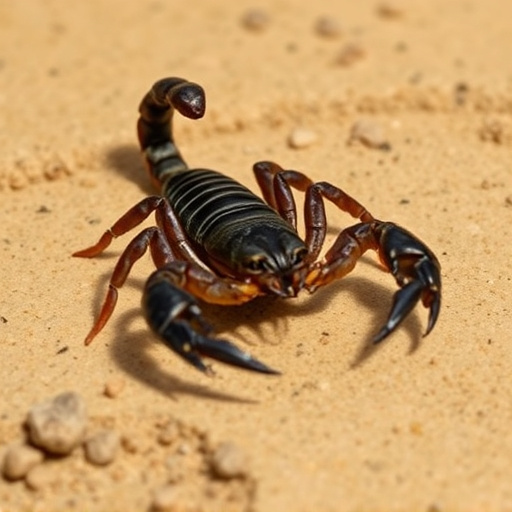The Catalina Foothills in southern Arizona, surrounding Tucson, host a unique desert ecosystem that supports diverse plant and animal life, including scorpions like Scorpiops viridis. Understanding this intricate web is vital for effective scorpion control Tucson. The warm climate, varied microclimates, and rich plant diversity provide both shelter and food for scorpions, which control insect populations. Professional Tucson scorpion control services manage these populations while preserving the natural balance. Key strategies include inspections, sealing entry points, cleaning outdoor spaces, and using specific pest control products safely and eco-friendly.
In the rugged, arid landscapes of Catalina Foothills’ desert environments, scorpions thrive, playing a pivotal role in the local ecosystem. This article delves into the intricate world of these arachnids, exploring their habitat and survival strategies. From understanding the unique ecological balance to identifying common species, we uncover the factors shaping scorpion populations in Tucson’s desert regions. Additionally, practical insights on scorpion control measures equip residents with effective tools to coexist harmoniously with these fascinating yet potentially pesky creatures, enhancing both wildlife conservation and home comfort.
- Understanding Catalina Foothills' Desert Ecosystem
- The Role of Climate and Geography in Scorpion Habitats
- Common Scorpion Species in Tucson's Desert Environments
- Scorpion Survival Strategies and Behavior Patterns
- Scorpion Control Measures for Residents in Tucson's Desert Regions
Understanding Catalina Foothills' Desert Ecosystem

The Catalina Foothills, located in southern Arizona and encompassing areas around Tucson, present a unique and challenging desert ecosystem. This semi-arid region is characterized by diverse microclimates, ranging from dry, rocky slopes to lush canyon bottoms, providing a varied landscape for its inhabitants. The area’s arid conditions, coupled with sporadic rainfall, create an environment where only specific plants and animals can thrive. Here, scorpions, including the common desert scorpion (Scorpiops viridis), have adapted to survive these harsh conditions.
Understanding the complex web of interactions within this desert ecosystem is crucial for effective scorpion control in Tucson. The Catalina Foothills support a rich variety of plant life, from saguaro cacti to various species of mesquite, which serve as both food and shelter for scorpions. These arachnids play a vital role in maintaining ecological balance by controlling insect populations, with their unique behavior and physiology allowing them to withstand extreme temperatures and find sustenance during scarce periods. Knowledge of this ecosystem is essential for any scorpion control measures, ensuring that interventions are both effective and respectful of the delicate natural balance.
The Role of Climate and Geography in Scorpion Habitats

The climate and geographical features of Catalina Foothills play a pivotal role in shaping the habitat and survival strategies of scorpions. These desert environments, characterized by warm, dry summers and mild winters, provide optimal conditions for scorpions to thrive. The arid climate ensures minimal water scarcity, allowing scorpions to subsist on occasional moisture sources like dew or small insects.
Geographically, the rugged terrain and varied microclimates within Catalina Foothills offer scorpions diverse shelters and hiding spots. Cracks in rocks, beneath bushes, and even human structures provide protection from predators and extreme temperatures. This geographical diversity also enables scorpions to establish territories and access a range of food sources, contributing to their overall survival and successful control of scorpion populations, as managed by professional scorpion control Tucson services.
Common Scorpion Species in Tucson's Desert Environments

Tucson, nestled in the picturesque Catalina Foothills, is home to a diverse range of desert creatures, among them various species of scorpions. The most common types include the Desert Scorpion (Cacanus versicolor) and the Black-tailed Scorpion (Androctonus australis). These arachnids have adapted remarkably well to the harsh conditions of the local desert environments, with their robust exoskeletons providing protection from both predators and extreme temperatures.
Scorpion control in Tucson is a significant concern for residents due to these species’ prevalence and the potential risks they pose. The Desert Scorpion, known for its distinctive light-colored body and dark stripes, prefers sandy and rocky habitats, often burrowing beneath the surface to escape heat during the day. In contrast, the Black-tailed Scorpion, with its striking black tip on a otherwise brown or gray body, favors more moist areas near rivers and streams, taking shelter in crevices and under debris. Understanding these habitat preferences is crucial for effective scorpion control measures in Tucson’s unique desert ecosystem.
Scorpion Survival Strategies and Behavior Patterns

In the harsh desert landscapes of Catalina Foothills, scorpions have evolved remarkable survival strategies to endure extreme temperatures and scarce resources. One of their key adaptations is burrowing—they create intricate tunnels beneath the sand, offering protection from predators and extreme weather conditions. This behavior also helps them conserve energy by remaining cool during hot days and warm nights. Additionally, scorpions are nocturnal creatures, preferring the relative safety of darkness to hunt for food and avoid encounters with other predators. Their excellent camouflage enables them to blend seamlessly into their surroundings, making it easier to ambush prey unawares.
Scorpians play a crucial role in the desert ecosystem as both predators and prey. As active hunters, they feed on insects, arachnids, and small vertebrates, helping control populations of these species. However, their presence can also pose risks to humans and pets through stings, which can cause varying levels of pain and, in rare cases, severe medical reactions. Scorpion control Tucson services are vital in managing these populations, especially in residential areas, to ensure the safety and well-being of locals and visitors alike. Understanding their behavior patterns is essential for developing effective prevention and control measures, allowing people to coexist harmoniously with these fascinating desert inhabitants.
Scorpion Control Measures for Residents in Tucson's Desert Regions

In Tucson’s desert regions, residents often encounter scorpions as part of their natural environment. While these arachnids have adapted to survive in harsh conditions, managing their presence around homes and communities is essential for both safety and peace of mind. Effective scorpion control measures are crucial for Tucson residents aiming to minimize interactions with these creatures.
One key strategy involves regular inspections and sealing potential entry points. Scorpions can enter homes through small cracks or openings, so checking foundations, doors, and windows for any gaps is vital. Sealing these areas with caulk or appropriate materials prevents scorpions from finding their way indoors. Additionally, keeping the outdoor area clean and free of debris reduces hiding spots, as scorpions are attracted to piles of wood, brush, or other clutter. Using pest control products specifically designed for scorpions can also be effective, but residents should always follow safety instructions and consider eco-friendly options whenever possible.
The diverse desert ecosystems of Catalina Foothills provide a unique habitat for various scorpion species, making understanding their behavior crucial for residents in Tucson. By recognizing the environmental factors that influence their survival and adopting effective scorpion control measures, such as sealing entry points and maintaining proper outdoor lighting, homeowners can coexist harmoniously with these intriguing creatures. Remember, professional scorpion control services in Tucson are readily available to assist in managing infestations safely and humanely.
